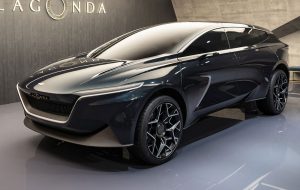Introduced to the public at the Geneva Motor Show in 1963, the Lancia Fulvia (which was later to become the Fiat Fulvia) is best remembered for its distinguished racing history.
The small Lancia had a string of rally successes in the ’60’s including winning the ’72 International Rally Championship.

Upon its release Road & Track magazine described the Fulvia as ‘a precision motorcar, an engineering tour de force’, and it enjoyed a well deserved sales success. Designed to replace the Lancia Appia and borrowing its engineering heavily from the Lancia Flavia, the Fulvia featured a newly designed narrow-angle V4 engine, independent suspension and all-round disc brakes.

It was the narrow angle V4 engine though that really caused a storm. The DOHC design’s narrow angle allowed for the use of a single cylinder head. Initially power was 59hp with displacement at 1091cc. In later models the compression ratio was raised to increase power to 71hp.

The Lancia Fulvia was available in Berlina, Coupe, Rallye and Sport however it was the Coupe version that proved most popular & gained the racing accolades the Fulvia is credited with. Its handsome and distinctive lines, coupled with the famous narrow angle V4 engine have since contributed to its reputation as a modern classic.

Equipped with five-speed gearbox and powered by the 90bhp 1.3-litre twin-overhead camshaft engine introduced for the Second Series HF model of 1970-76, it was a little jewel – with 100mph performance, light steering and excellent brakes. Outliving its saloon iant by three years, the last Coupe left Lancia’s Chivasso plant in June 1976.

Lancia Fulvia Coupe 1.3 Rallye HF
Engine
Engine type – Number of cylinders: V 4
Fuel type: Petrol
Fuel System: 2 Solex carbs
Coolant: Water
Engine Alignment: Longitudinal
Engine Position: Longitudinal
Engine size – Displacement – Engine capacity: 1298 cm3 ( 79.2 cu-in )
Bore x Stroke: 77.00 x 69.70 mm ( 3.03 x 2.72 inches)
Number of valves: 8 Valves
Aspiration: N/A
Compression Ratio: 10.50
Maximum power – Output – Horsepower: 101 PS (100 bhp) (74 kW) @ 6400 rpm
Maximum torque: 130.0 Nm (95 lb.ft) @ 6400 rpm
Drive wheels – Traction – Drivetrain: FWD
Transmission Gearbox – Number of speeds: 4 speed Manual
Dimensions
Body: Coupé
Num. of Doors: 2
Wheelbase: 233 cm ( 91.73 inches )
Length: 391.7 cm ( 154.21 inches )
Width: 156.2 cm ( 61.5 inches )
Height: 129.5 cm ( 50.98 inches )
Front Axle: 1300 cm ( 511.81 inches )
Rear Axle: 1280 cm ( 503.94 inches )
Aerodynamic drag coefficient – Cx :
Front Brakes – Disc dimensions: Discs ( mm)
Rear Brakes – Dics dimensions: Discs ( mm)
Front Tyres – Rims dimensions: / R
Rear Tyres – Rims dimensions: / R
Front Wheels Width: “
Rear Wheels Width: “
Curb Weight: 795 kg ( 1753 lbs )
Weight-Power Output Ratio: 8
Steering: Endless screw. –
Front Suspension: Transverse leaf spring.
Rear Suspension: Semi-elliptic leaf springs. Panhard rod.
Performance
Top Speed: 174 km/h (108 Mph)
Acceleration 0 to 60 mph (0 to 96 Km/h): s
Acceleration 0 to 100 km/h (0 to 62 mph): s
Acceleration 0 to 400m (1/4 mile): – s
Acceleration 0 to 1000m:-
Emissions and Range
Fuel Tank Capacity: 38.2 L
CO2 emissions: g/Km (Lancia)
Share this:
- Click to share on Facebook (Opens in new window)
- Click to share on Twitter (Opens in new window)
- Click to print (Opens in new window)
- Click to share on LinkedIn (Opens in new window)
- Click to share on Reddit (Opens in new window)
- Click to share on Tumblr (Opens in new window)
- Click to share on Pinterest (Opens in new window)
- Click to share on Pocket (Opens in new window)
- Click to share on Telegram (Opens in new window)
- Click to share on WhatsApp (Opens in new window)




